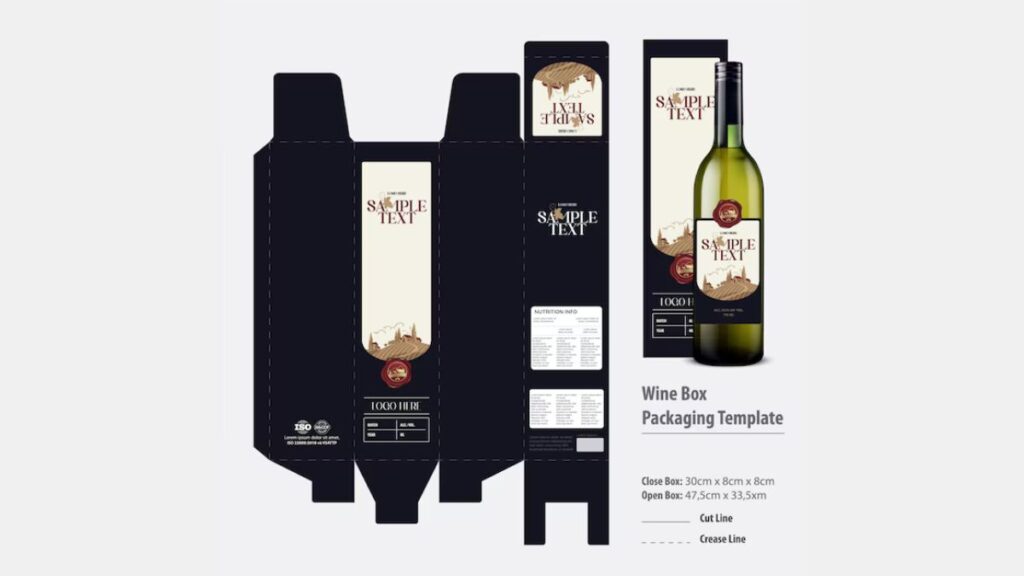Box wine is a growing trend in the world of wine. Traditionally viewed as a cheaper, lower-quality option, box wines is now being recognized for its convenience, sustainability, and affordability. As more wine lovers explore alternatives to bottled wine, box wine is becoming a more mainstream choice. This guide will explore everything you need to know about box wine, from its benefits and drawbacks to how it stacks up against traditional bottled wine.
What is Box Wine?
Box wines refers to wine packaged in a box, which typically consists of a plastic bladder inside a cardboard outer shell. The wine is dispensed through a tap, which makes it easy to pour without the need for a corkscrew. Most box wines come in three-liter or five-liter containers, though some premium options offer smaller sizes.
The key difference between box wines and bottled wine is the packaging. While bottled wine uses glass containers, which are often heavy and breakable, box wines offers a lightweight and more durable alternative. Additionally, the wine is protected from light and air, ensuring it stays fresh for an extended period once opened.
Why Choose Box wines?
1. Affordability
One of the primary reasons people are turning to box wines is its affordability. Box wine typically costs less per liter than bottled wine, making it a more budget-friendly option. For those who enjoy drinking wine regularly, box wine provides a significant cost-saving advantage.
2. Convenience
Box wine is incredibly convenient. Unlike bottles, which require a corkscrew, box wines comes with a built-in tap, which makes it easy to pour and store. This feature is perfect for casual drinkers or anyone who enjoys wine with friends and family. Furthermore, box wine can be stored horizontally, allowing you to easily stack multiple boxes in your pantry or refrigerator without taking up too much space.
3. Longer Shelf Life
One of the standout advantages of box wines is its extended shelf life. While traditional wine bottles need to be consumed within a few days or weeks of opening to preserve freshness, box wines can stay fresh for several weeks, thanks to the airtight packaging. This makes it an excellent choice for people who want to enjoy wine without the pressure to finish a bottle quickly.
4. Environmental Benefits
Box wine has a lower environmental footprint than bottled wine, primarily because the packaging is lighter and requires less energy to transport. Box wines is also more sustainable than bottled wine due to its smaller carbon footprint. The cardboard box can be recycled, and the plastic bladder inside can be repurposed. In contrast, glass bottles are heavier, use more energy during production, and are less recyclable.
5. Portion Control
Box wines allows for better portion control. The tap makes it easy to pour just the right amount, and since the wine stays fresh for longer, you can enjoy a glass or two whenever you like without worrying about waste.
How Does Box Wine Compare to Bottled Wine?
Box wines and bottled wine each have their own advantages. Here’s a comparison of the two, highlighting key differences in taste, cost, convenience, and sustainability:
| Feature | Box Wine | Bottled Wine |
| Cost per liter | Generally cheaper | More expensive per liter |
| Shelf life | Stays fresh for 4-6 weeks after opening | Typically must be consumed within a few days |
| Portion control | Easy to control with tap system | Requires corkscrew and careful pouring |
| Environmental impact | Lighter packaging, more sustainable | Heavier glass, higher carbon footprint |
| Taste | Can vary, but many premium options are available | Generally higher quality, but can be inconsistent |
| Convenience | Easy to store and pour | Requires storage space, corking, and uncorking |
Taste
The taste of box wines has long been a topic of debate. Traditionally, box wine was seen as lower quality and often compared to “jug” wine. However, in recent years, many premium box wines have been introduced to the market, offering flavors comparable to bottled wines. These wines are produced with the same care and attention as their bottled counterparts, making it easier than ever to enjoy quality wine from a box.
Packaging and Convenience
Box wines wins in terms of convenience and packaging. The lightweight, unbreakable packaging makes it ideal for outdoor activities like barbecues, picnics, or camping. Its space-saving design allows it to be stored easily in small areas, making it a great option for small kitchens or apartments. On the other hand, bottled wine requires extra storage space and is prone to breaking.
Environmental Impact
Box wine’s environmental impact is notably lower than bottled wine. The cardboard packaging is recyclable, and the plastic bladder can be repurposed. Bottled wine, on the other hand, requires more energy to produce and transport, and glass bottles are often not recycled as frequently as they should be. For eco-conscious consumers, box wines is a more sustainable choice.
What Types of Box Wine Are Available?
Box wine comes in a variety of types, including reds, whites, rosés, and even sparkling wines. Many well-known wineries have begun producing box wines to cater to the growing demand for this convenient format. Here’s a breakdown of some of the most popular types of box wines:
1. Red Box Wine
Red box wines is available in a variety of styles, including full-bodied reds like Cabernet Sauvignon, Merlot, and Syrah. These wines tend to have deeper, richer flavors and are often aged in oak barrels, which gives them additional complexity. Red box wines can pair well with red meats, hearty stews, and pasta dishes.
2. White Box Wine
White wines like Chardonnay, Sauvignon Blanc, and Pinot Grigio are some of the most popular white box wines. These wines are typically lighter and more refreshing, making them a great choice for warmer weather. White box wines are often paired with seafood, chicken, or light salads.
3. Rosé Box Wine
Box wines have become increasingly popular, offering a crisp, fruity alternative to both red and white wines. Rosé box wines can be dry or sweet, and they pair well with a variety of foods, including grilled vegetables, seafood, and fresh salads.
4. Sparkling Box Win’e
While less common, sparkling wines in a box are available, typically in varieties like Prosecco or Brut Champagne. These wines offer the same celebratory fizz in a convenient, portable package. Sparkling box win’e is ideal for parties, gatherings, or casual celebrations.
Best Box Wines to Try
Here are some of the top-rated box wines available today:
1. Black Box Wines
Black Box Wines has a reputation for producing high-quality wines in a box format. They offer a variety of red, white, and rosé wines, and their Cabernet Sauvignon and Merlot are especially popular. Their wines are well-regarded for their smooth texture and bold flavors.
2. Franzia
Franzia is one of the most well-known names in the box win’e industry. Offering a wide range of options, from sweet white wines to robust reds, Franzia is a great choice for budget-conscious consumers. Their wines are smooth and approachable, making them an excellent choice for casual gatherings.
3. Bota Box
Bota Box is another premium option for box win’e lovers. Known for their eco-friendly packaging, Bota Box offers a variety of varietals, including a highly-rated Sauvignon Blanc and Cabernet Sauvignon. The wine is fresh and flavorful, offering great value for money.
4. La Vieille Ferme
La Vieille Ferme offers a delightful range of box win’e, including their popular rosé. Known for their crisp, refreshing wines, this brand brings the taste of France to your glass in an easy-to-serve package.
How to Store and Serve Box Wine
Although box wines has a longer shelf life than bottled wine once opened, proper storage is still essential to maintaining its freshness. Here are some tips for storing and serving box wine:
- Store in a cool, dark place: Like bottled wine, box win’e should be stored away from direct sunlight and heat. Keep it in a cool, dark pantry or refrigerator.
- Refrigerate after opening: Once opened, box win’e should be refrigerated to help preserve its freshness. Since the airtight bag inside the box prevents air from entering, the wine will stay fresh for up to 4-6 weeks.
- Serve at the right temperature: Red wines should be served slightly below room temperature (around 60-65°F), while white and rosé wines are best served chilled (around 45-50°F). Sparkling wines should be served well-chilled at around 40°F.
Conclusion
Box wine has evolved into a convenient, sustainable, and affordable alternative to bottled wine. With longer shelf life, eco-friendly packaging, and a wide range of flavors, box win’e is an excellent option for those seeking value without sacrificing quality. Whether you’re hosting a party, planning a picnic, or simply enjoying a glass after work, box wines offers an easy, budget-friendly solution. So the next time you’re at the store, consider grabbing a box of wine for your next occasion—you might just find it’s the perfect choice.







